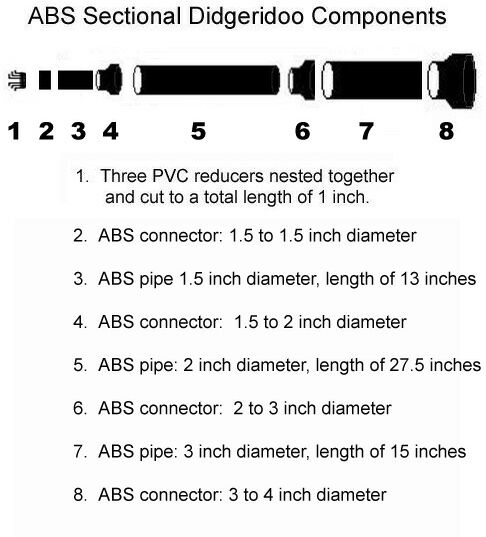Index to Woody's Didgeridoings
- Introduction to this Blog - how I got into didgeridooing
- My Preferred Didgeridoo Mouthpiece and How to Make It - after much experimentation I find a great and easy to maintain mouthpiece
- Plans for a Family of Sectional ABS Didgeridoos using 2 inch diameter pipe - the simplest pipe didgeridoo you can make
- Plans for a Sectional ABS Didgeridoo using three different diameter pipes - the best pipe didgeridoo for sound quality
- Converting the Sectional Didge into a Tuneable Didgibone - convert a didge into one with a slide like a trombone
- Bass Sectional ABS Didgeridoo (Key of G) - deepest and lowest didge
- Two Channel ABS Sax Didgeridoo (Key of C)
- Sectional ABS Didgeridoo Using Four Different Diameter Pipes (Key of F)
- Tsamiko: My First Didgeridoo Recording
- Interesting Sounds: Intooting - learn some interesting new sound techniques
- More Interesting Sounds: Drooting - learn some more interesting new sound techniques
- Even More Interesting Sounds: Tongue Droning - and even more interesting new sound techniques
- Didgeridoo Tribe Cartoon Gallery by Soukou - great cartoons from the days of the original international internet didgeridoo tribe
































